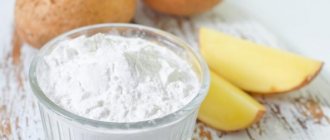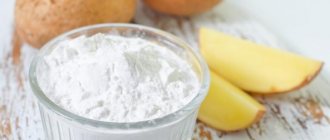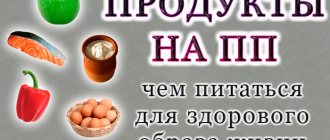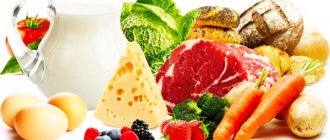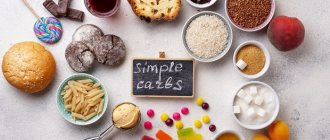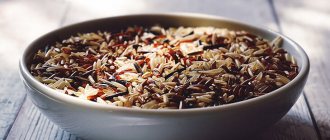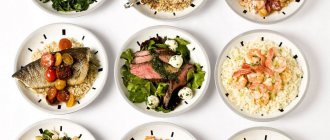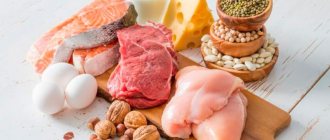What are carbohydrates
Carbohydrates (glycides) are substances of organic origin consisting of carbon and water. These substances are an integral part of all living things: plants and animals. They are divided into simple and complex, where simple are monosaccharides and disaccharides, and complex are oligosaccharides and polysaccharides.
Monosaccharides (fast carbohydrates) have the ability to quickly dissolve and be absorbed into the blood, sharply increasing blood sugar. Products containing monosaccharides have a high glycemic index and cause the production of large amounts of insulin, which provokes the occurrence of a disease such as type II diabetes.
Type II diabetes mellitus is a disease in which resistance (insensitivity) of cells to insulin occurs.
Complex carbohydrates (slow) are gradually absorbed into the blood, subsequently breaking down into monosaccharides. They have a low glycemic index. But no matter what carbohydrates are called, they are very high in calories, and their large consumption leads to weight gain and obesity.
Barley porridge will keep you young
Peter I considered this porridge the main one on his table, and introduced it into the diet of his soldiers. The king did not make this decision in vain. Pearl barley porridge is incredibly nutritious, helps maintain vigor, activity, and energy, despite its low calorie content (110 kcal per 100 g of product). It should be at the forefront of the diet of people who are involved in heavy physical activity. These properties are explained by its composition:
- protein – 9.87 g;
- carbohydrates – 62 g;
- fat – 1.14 g;
- potassium;
- iron;
- phosphorus;
- sodium;
- zinc;
- vitamins B, A, K and E;
- lysine.
Many believe that pearl barley porridge can preserve and even restore youth. It has an antioxidant effect and strengthens blood vessels. In addition, many scientists pay attention to the high content of lysine in pearl barley porridge. This substance has a pronounced antiseptic effect, which suggests that this type of porridge is able to fight bacterial and viral infections.
The high concentration of phosphorus allows us to recommend this product to athletes and bodybuilders. This trace element relieves fatigue and also helps increase the percentage of muscle mass.
Cooking pearl barley porridge is a simple, but time-consuming task. It must be soaked for a long time before cooking, and then simmered over low heat for about 2 hours.
High carbohydrate foods
The Dukan, Atkins and other nutritionists' diets are based on exclusion from the diet:
- Sugar and all products containing it;
- Cereals, especially semolina and rice;
- Bakery and pasta products;
- Potatoes, bananas, grapes, dried fruits.
Before purchasing food products, you need to read the instructions for them and make sure that there are no prohibited components. But what low-carb products are, you need to study the composition and calorie content of each of them.
Is it possible to add starchy vegetables, legumes and fruits to food?
When choosing vegetables that do not contain starch and other polysaccharides and are low in carbohydrates, you must follow several rules:
- Most vegetables that grow above ground are considered non-starchy. There are practically no polysaccharide chains among cellular structures, so such vegetables contain less carbohydrates. These include cruciferous vegetables - broccoli, leafy greens, peppers, chard and cabbage. Spaghetti squash and zucchini squash may be used.
- Tubers and rhizomes growing underground are rich in starch and saccharides compared to fruits. They are represented by potatoes, carrots, turnips and beets.
- In 20% of cases, the first two rules do not work, since there are exceptions. For example, pumpkins grow above the ground and are not rhizomes. At the same time, they have a high sugar content.
If we forget that most root vegetables and fruits do not contain low amounts of hydrocarbons, then the nutrient-rich composition gives us pause. Such products have polysaccharide complexes, but practically do not include simple carbohydrate chains in the form of glucose. Boiled or chopped, root vegetables can be a healthy addition to any diet. Rhizomes replace sweeteners and even cereals. An example is cauliflower rice.
The situation is similar with representatives of legumes. Chickpeas can be processed into flour, while hummus is used as a cream substitute in low-carb diets. Legumes contain a large amount of antioxidants, providing the body with the necessary amount of fiber. They also have a sweet flavor, which helps curb the urge to eat cane sugar unnecessarily.
Due to their beneficial properties and the presence of a vitamin and mineral complex, fruits and starchy vegetables should be included in the daily diet:
- berries - strawberries, blackberries, blueberries or raspberries;
- cherries, cherries;
- cranberry;
- kiwi;
- citrus;
- melon;
- sweet or red potatoes;
- swede;
- beets;
- celery;
- parsnip.
Representative legumes include beans, black beans, and adzuki beans. It is important to remember that when following a low-carb diet, you should not abuse foods high in saccharides.
Reference! It is recommended to soak legumes and grains in warm water for 15–20 minutes before cooking, because this releases protein, vitamins and minerals and facilitates digestion.
Durum wheat pasta
Pasta made from durum wheat flour is marked on the package with the letter A. The fact is that such a cereal contains more paste than high-calorie starch. However, there are other symbols - B and C, which indicate the production of products from soft varieties of cereals.
- For a low-carb diet, you can only eat pasta with the symbol “A”.
- In dry form, the calorie content of the product per 100 grams ranges from 300 to 370 kcal (indicated on the package), but in boiled form, their nutritional value drops by more than 1/3.
The highest quality manufacturers are Italians, since their products contain water, flour and salt.
Russian manufacturers still add flour from soft varieties, as well as egg yolk and vegetable oil, which adds nutritional value.
What are the dangers of a low-carbohydrate diet?
Carbohydrates provide about 50-60% of the energy value of the diet, so carbohydrate-free diets should be extremely short-term, because the functions that carbohydrates perform in the human body are extremely important - they normalize the metabolism of proteins and fats, and are also part of hormones and enzymes.
We should not forget that the simple carbohydrate glucose is the main supplier of energy for the brain. Therefore, a prolonged lack of carbohydrates in the menu can lead to such a serious consequence as hypoglycemia - a significantly reduced level of glucose in the blood. In this condition, a person experiences fatigue, dizziness, hunger, nausea and trembling hands for a long time. And if treatment is not started in time, the consequences can be very unpleasant.
Read more about the benefits and harms of carbohydrates in our special topic “Carbohydrate foods - we only need useful energy!”
Finally
It is very important to start a carbohydrate-free diet correctly - to reduce the amount of carbohydrates in the diet gradually, and also not to forget that such a diet should only be temporary. It is then that the result of a carbohydrate-free diet will be truly noticeable and pleasing, and your health will not suffer.
Low Carb Table
To lose weight, you need to create a daily menu of low-carb foods.
In this case, you can be guided by a special table of low-carbohydrate foods, the calorie content of which is calculated per 100 grams.
Meat and fish products
| № | Products | Carbohydrates | Squirrels | Fats | Kcal |
| 1 | Beef | 0 | 18,9 | 12,4 | 187 |
| 2 | Veal | 0 | 19,7 | 1,2 | 90 |
| 3 | Chicken | 0,6 | 20,8 | 8,8 | 165 |
| 4 | Pork | 0 | 14,6 | 33 | 355,4 |
| 5 | Turkey meat | 0,8 | 21,6 | 12 | 197 |
| 6 | Chick | 0,4 | 18,7 | 7,8 | 156 |
| 7 | Chicken egg | 0,7 | 12,7 | 11,5 | 157 |
| 8 | Common carp | 0 | 16 | 3,6 | 96 |
| 9 | Cod | — | 17,5 | 0,6 | 75 |
| 10 | Salmon | — | 20,8 | 15,1 | 219 |
| 11 | Pink salmon | — | 21 | 7 | 147 |
| 12 | Pike perch (sula) | — | 19 | 0,8 | 83 |
| 13 | Boiled diet sausage | — | 12,1 | 13,5 | 170 |
| 14 | Boiled doctor's sausage | — | 13,7 | 22,8 | 260 |
| 15 | Low-fat cottage cheese | 1,3 | 16,7 | 9 | 156 |
| 16 | Russian cheese | — | 23,4 | 30 | 363,4 |
| 17 | Kefir 1% fat | 4 | 2,8 | 1 | 40 |
Vegetables
| № | Products | Carbohydrates | Squirrels | Fats | Kcal |
| 1 | Zucchini or zucchini | 5,7 | 0,6 | 0,3 | 27 |
| 2 | Eggplant | 5,5 | 0,6 | 0,1 | 25,3 |
| 3 | White cabbage | 5,4 | 1,8 | — | 28 |
| 4 | Broccoli | 5,2 | 3 | 0,4 | 28 |
| 5 | Cauliflower | 4,9 | 2,5 | — | 29 |
| 6 | Asparagus | 3,2 | 1,9 | 0,1 | 21,3 |
| 7 | Carrot | 7 | 1,3 | 0,1 | 33 |
| 8 | cucumbers | 3 | 0,8 | — | 15 |
| 9 | Ground tomatoes | 4,2 | 0,6 | — | 19 |
| 10 | bell pepper | 5,7 | 1,3 | — | 27 |
| 11 | Radish | 4,1 | 1,2 | — | 20 |
| 12 | Leaf lettuce | 2,2 | 1,5 | — | 14 |
| 13 | Bulb onions | 9,5 | 1,7 | 44,8 | |
| 14 | Pumpkin | 6,5 | 1 | — | 30 |
| 15 | Mushrooms | 1,6 | 3,2 | 0,7 | 25,5 |
| 16 | Celery | 2 | — | — | 8 |
Fruits and berries
| № | Products | Carbohydrates | Squirrels | Fats | Kcal |
| 1 | Apples | 11,3 | 0,4 | — | 46 |
| 2 | Black currant | 8 | 1 | — | 40 |
| 3 | Red currants | 8 | 0,6 | — | 28 |
| 4 | Raspberries | 9 | 0,8 | — | 41 |
| 5 | Blackberry | 7,5 | 0,7 | 0,4 | 35 |
| 6 | Strawberry | 7,5 | 0,8 | 0,4 | 41 |
| 7 | Gooseberry | 9,9 | 0,7 | — | 42,4 |
| 8 | Cranberry | 4,8 | 0,5 | — | 28 |
| 9 | Mandarin | 8,6 | 0,8 | — | 38 |
| 10 | Orange | 8,4 | 0,9 | — | 38 |
| 11 | Grapefruit | 7,3 | 0,9 | — | 32,8 |
| 12 | Blueberry | 8,6 | 1,1 | — | 40 |
| 13 | Cherry | 7,7 | 1 | 0,5 | 34,8 |
To this list of low-carbohydrate products you can add a grain crop such as amaranth (BJU - 8.9 1.7 61.7 kcal - 298). By preparing porridge from it, you can not only get enough, but also improve your health, thanks to the antioxidant effect of squalene, which fights free radicals.
And peanut and almond flour can be added instead of wheat when preparing various desserts.
Cereals
Amaranth
This cereal has been highly valued since ancient times. Contains a special substance squalene, which can resist the destructive effects of free radicals, being an antitumor agent. This product will be very useful for nourishing muscles, and its history makes you want to learn more about all the miraculous properties of amaranth. You can prepare this grain for breakfast, replacing regular cereal.
Almond flour
By replacing the usual baking flour with carefully ground almonds, you can prepare delicious desserts. Such baking will not harm the contours of the body and will not destroy the results of hard work. In particular, its composition is rich in vitamin E and monounsaturated fats necessary for heart health.
Peanut flour
It is peanuts ground into powder, which during dehydration become less fatty (almost 2 times). Contains a lot of protein, beneficial microelements and substances necessary for the body. Gluten free. This flour is added to cocktails, made into a paste for toast, or used for baking.
Alternatives to wheat flour can be found to suit your taste. You can add coconut flour, wheat germ, and hazelnut flour to the above healthy products.
Lowest carb foods
Having carefully studied the table, we can conclude that the lowest carbohydrate foods include all types of meat, fish, eggs, dairy products, mushrooms, as well as various types of leafy greens.
But oils and fats do not contain carbohydrates at all, these are:
- Creamy;
- Palm;
- Olive;
- Corn;
- Sunflower oil;
- Coconut;
- Hemp;
- Linen;
- Walnut oil;
- Smalets.
Now manufacturers are becoming more sophisticated and on store shelves you can see oils from numerous products.
Spices
To give a dish or dessert a unique flavor, all kinds of spices are used:
- Turmeric;
- Saffron;
- Peppers;
- Cinnamon;
- Ginger;
- Basil;
- Khmeli-suneli;
- Apple vinegar;
- Cocoa powder;
- Soy sauce.
Seasonings will help create a feeling of fullness, and they contain virtually no carbohydrates.
Couscous
Couscous is a processed grain product usually made from durum wheat semolina.
Couscous is a staple in many Middle Eastern and Moroccan cuisines, and is relatively low in carbohydrates—about 34.5 grams of net carbs in a 160-gram serving of cooked couscous ().
This grain is also rich in selenium, a micronutrient that plays a critical role in heart health, thyroid function, immune health and more (,).
Including couscous in your diet can also increase your intake of several other important nutrients, including pantothenic acid, manganese, copper and thiamine ().
Conclusion:
Couscous is a grain product that contains 34.5 grams of net carbs per 160-gram serving. Couscous is not only high in selenium, but also high in pantothenic acid, manganese, copper and thiamine.
Nuts and seeds
Nuts and seeds will help you cope perfectly with the feeling of hunger:
- Almond;
- Walnut;
- Cashew nuts;
- Hazelnut;
- Sunflower seeds;
- Peanut;
- Flax-seed;
- Coconut flakes;
- Chia seeds;
- Sesame seeds;
- Pumpkin seeds;
- Pistachios.
You can “peck” at these low-carb helpers all day long, forgetting about nutritious food for a long time.
Not everything is as bad as it seems at first glance, because from the above products you can prepare a lot of different dishes and desserts. Once you are full, you can not feel hungry for a long time. But, if you want to eat something sweet, berries and fruits will come to the rescue.
